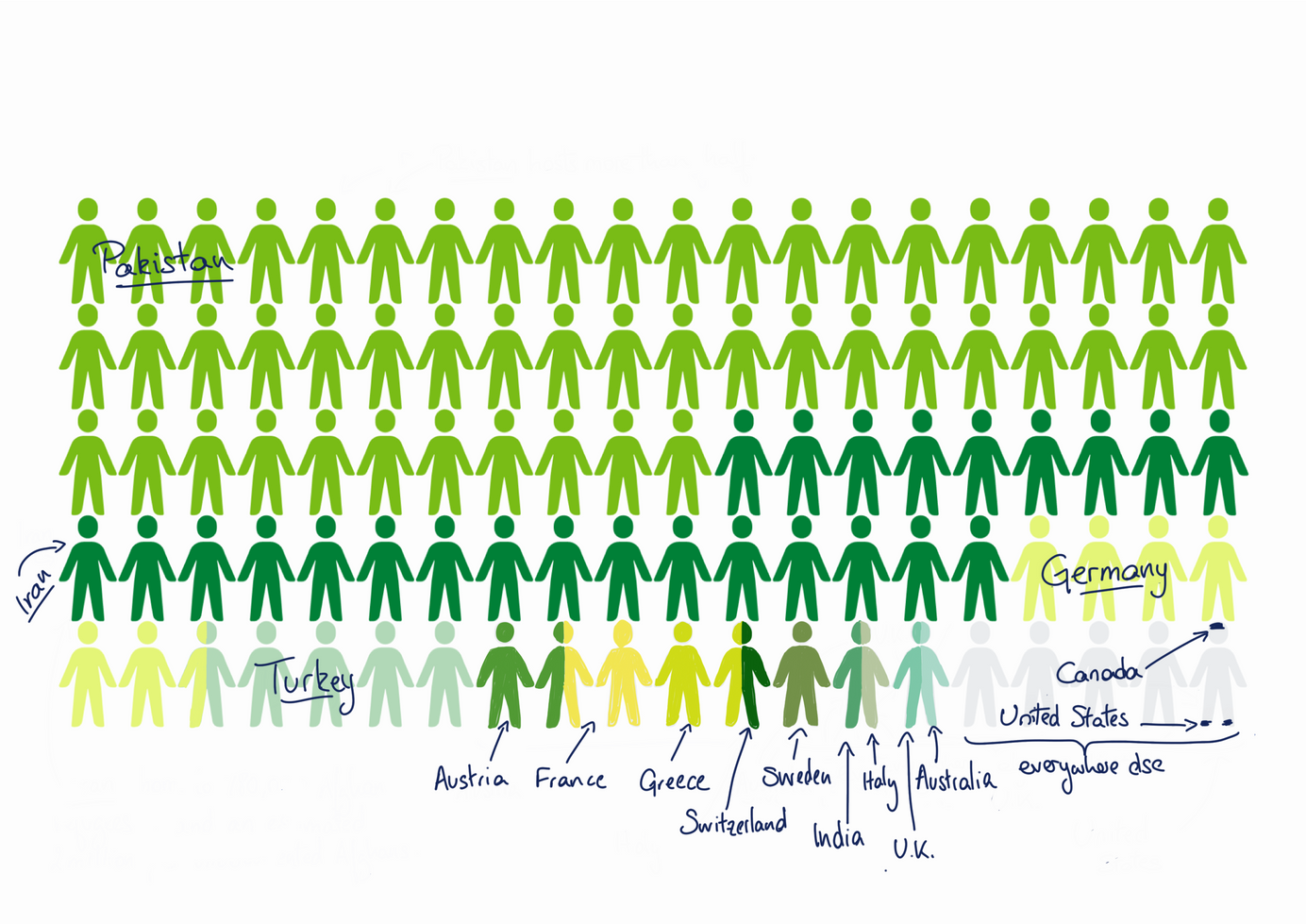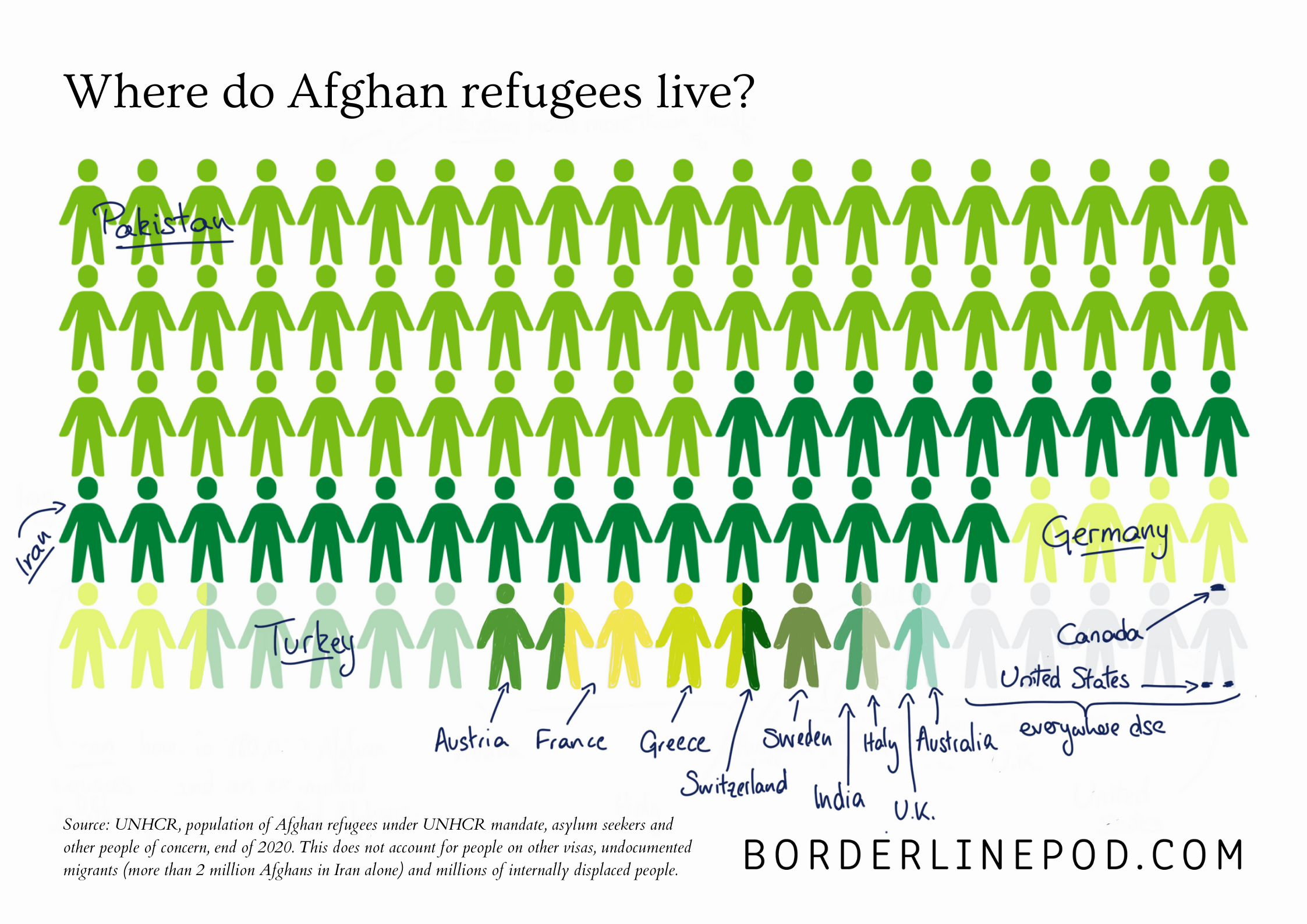
Where in the world are Afghan refugees?
Europe complains, but it's far from hosting the most Afghan refugees and asylum seekers. Still it shines next to the US...
Who's actually taking in Afghan refugees and asylum seekers?
As in most displacement situations, it's Afghanistan's neighbours, Pakistan and Iran, who are hosting the highest numbers of displaced people. The map here shows refugees and asylum seekers that the UN High Commission on Refugees is aware of (data from UNHCR). There are many more Afghans in need of refuge around the world. Iran is also host to more than 2 million undocumented Afghans and deported 400,000 back to Afghanistan in the first seven months of this year alone (data from IOM). There were also 3 million internally displaced people in the country in 2020, likely more today. (Hover over each country for details.)
🤔 To understand the difference between refugee resettlement and asylum, and why the former is often woefully inadequate, revisit my conversation with Ty McCormick.
President Emmanuel Macron of France made clear he did not want Europe, or just some countries in Europe, to face a surge of Afghan migration alone. That's a source of constant tension in the European Union, especially ahead of decidedly right-leaning elections in France and Germany. Those two countries, along with Austria and Greece, have certainly taken in many more Afghan refugees than most member states or than the US and UK, who led the invasion of Afghanistan.
(The charts below add up first and final positive decisions on asylum cases, as well as refugee resettlement numbers, all data from Eurostat. UK data for 2020 is from the Home Office.)
Because Germany is actually making everyone else look bad, let's remove it to properly read this chart.
It makes other coalition countries look bad too.
For a final perspective, here's the Afghan refugee and asylum-seeking population broken up by country of residence. Just 1 in 1250 lives in the United States.

🌏 To reconsider everything you thought about refugees, listen to my recent chat with Dina Nayeri, author of The Ungrateful Refugee.
Hey, you read to the end!
Don’t miss future articles like this one; let me into your inbox.







